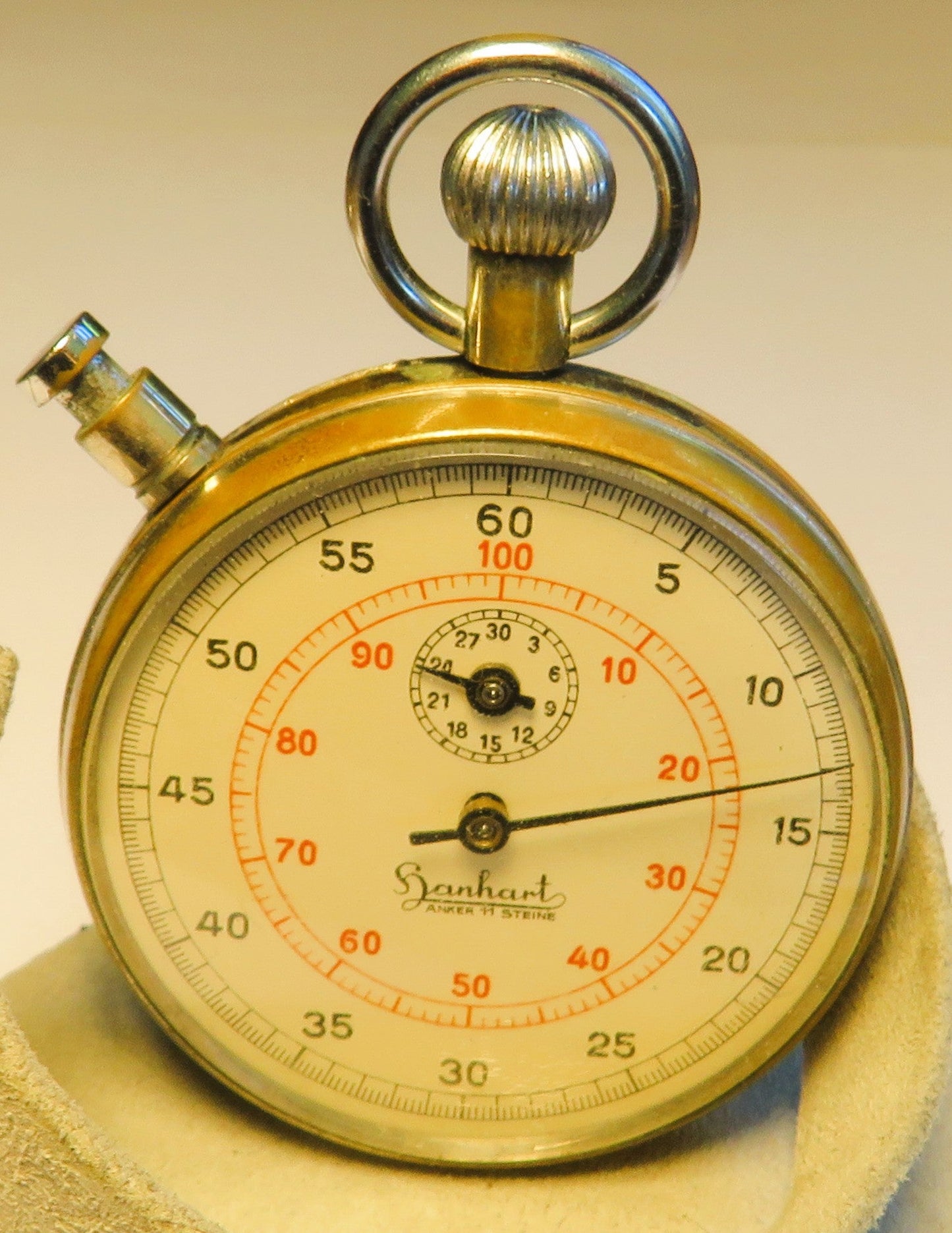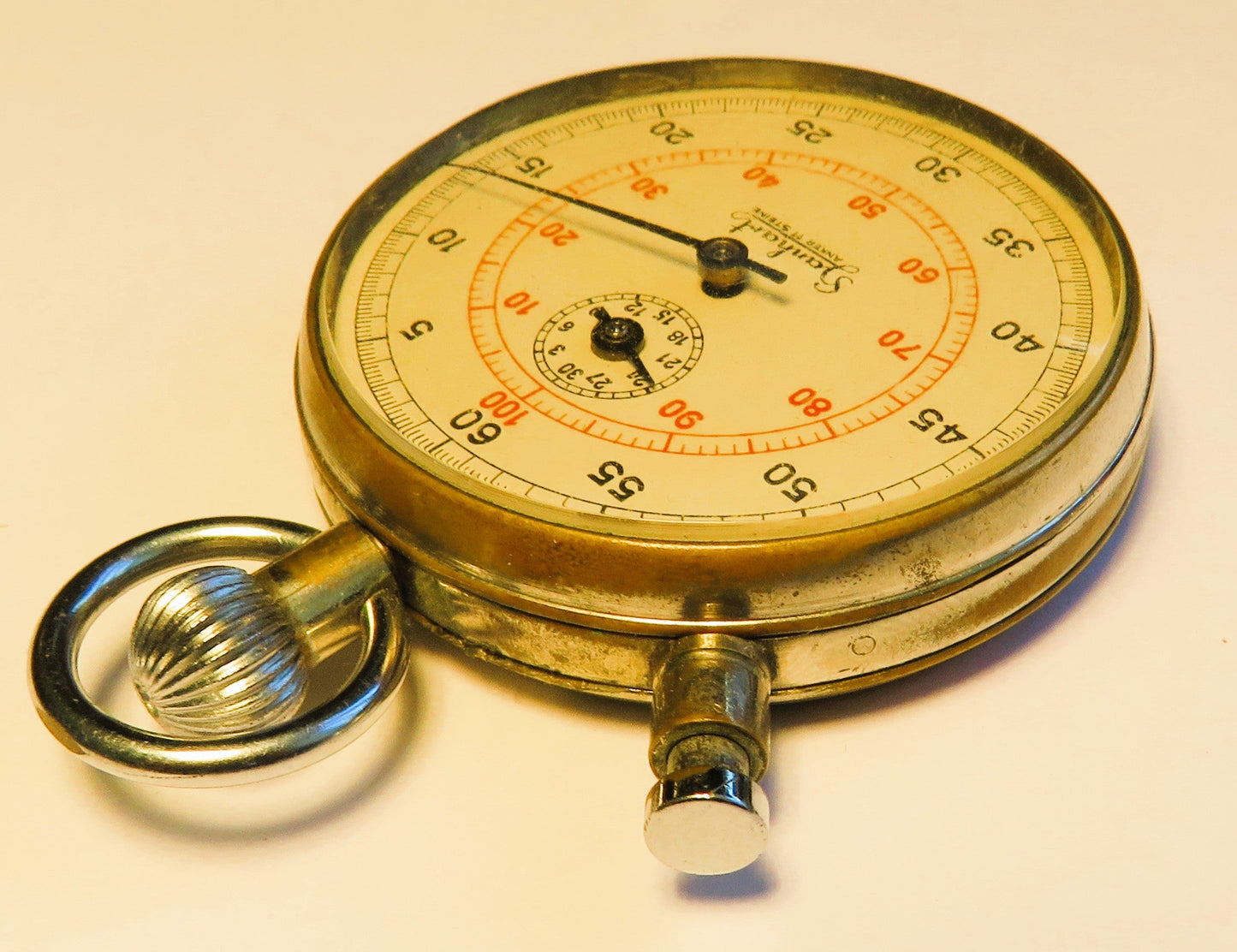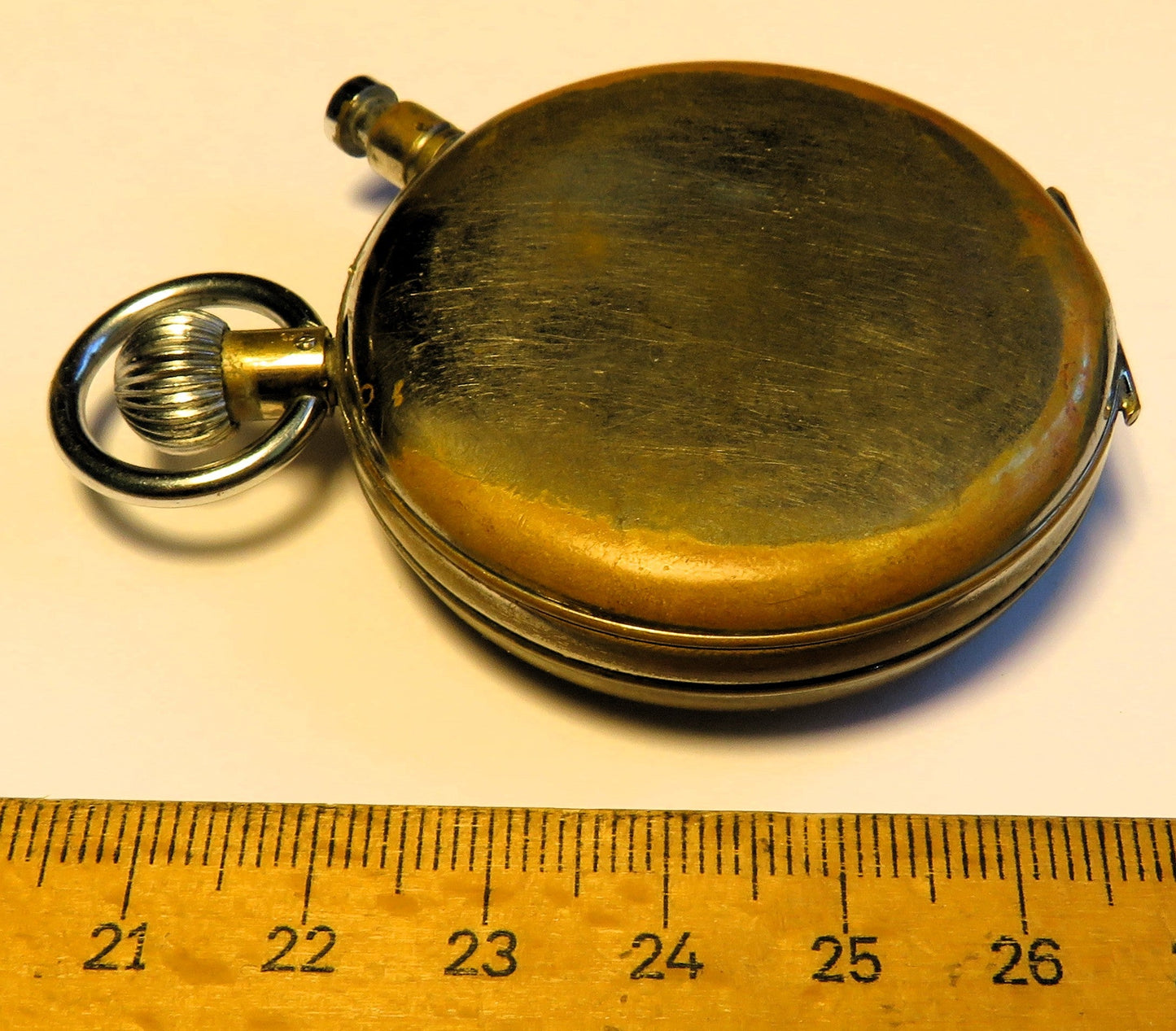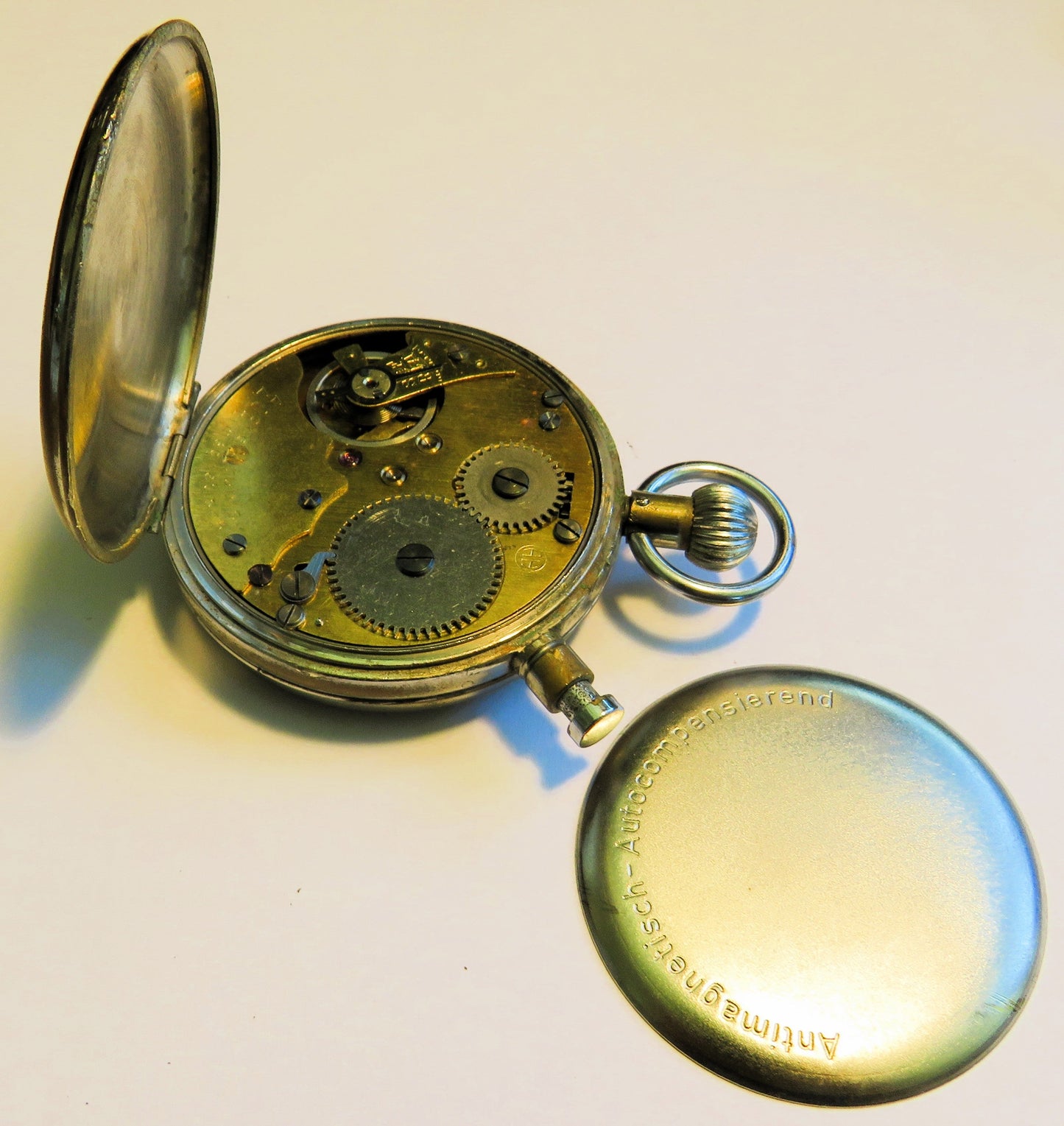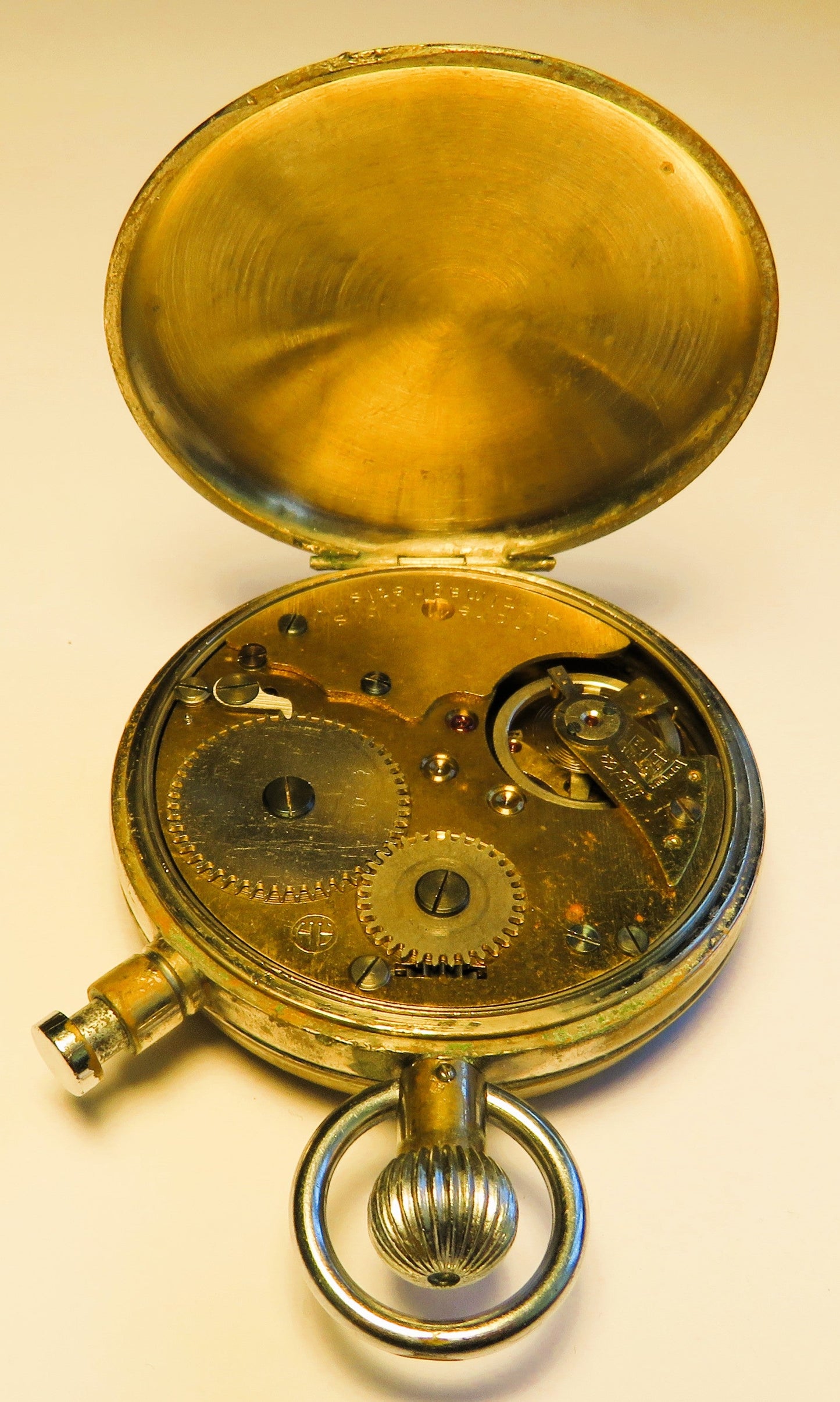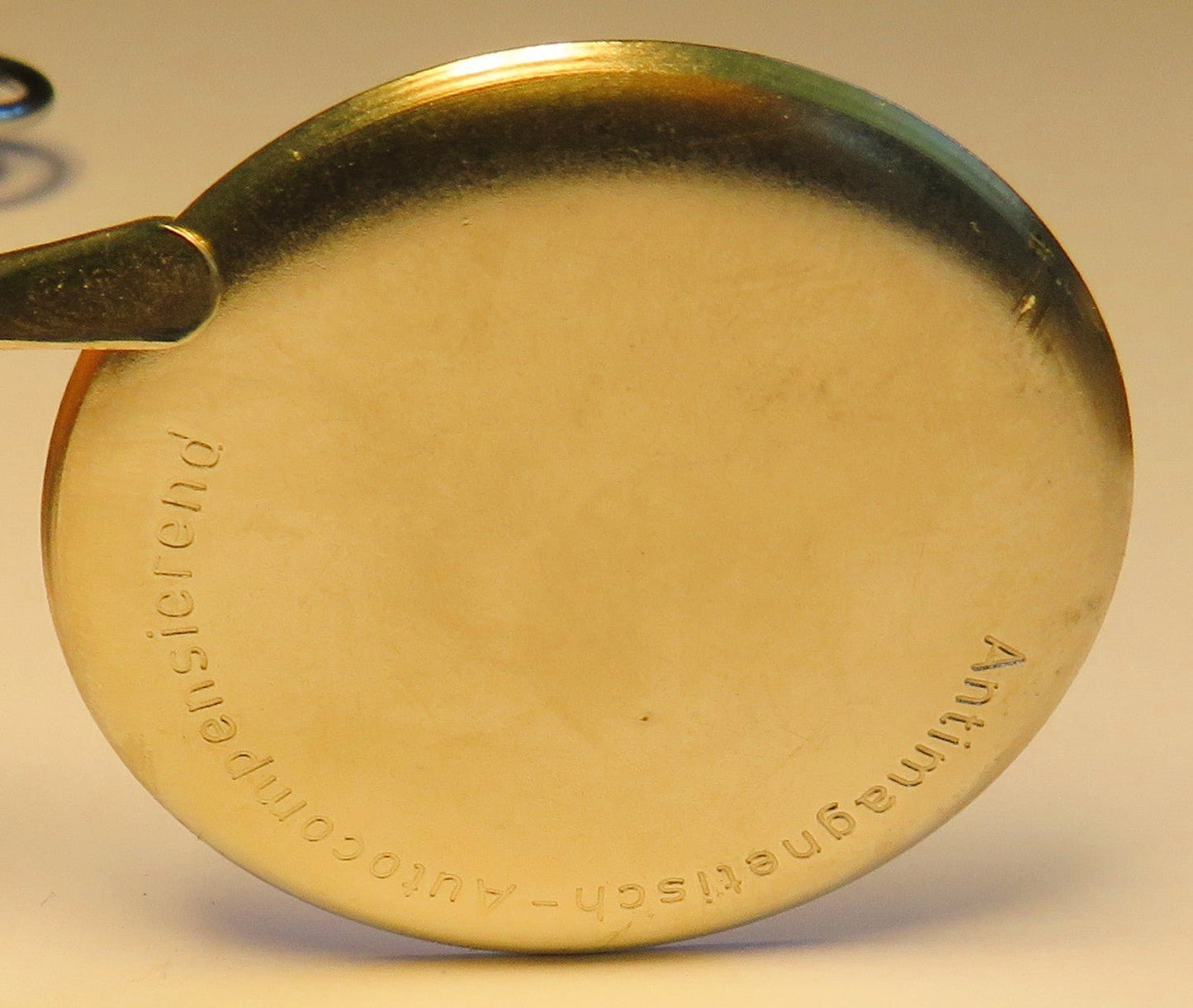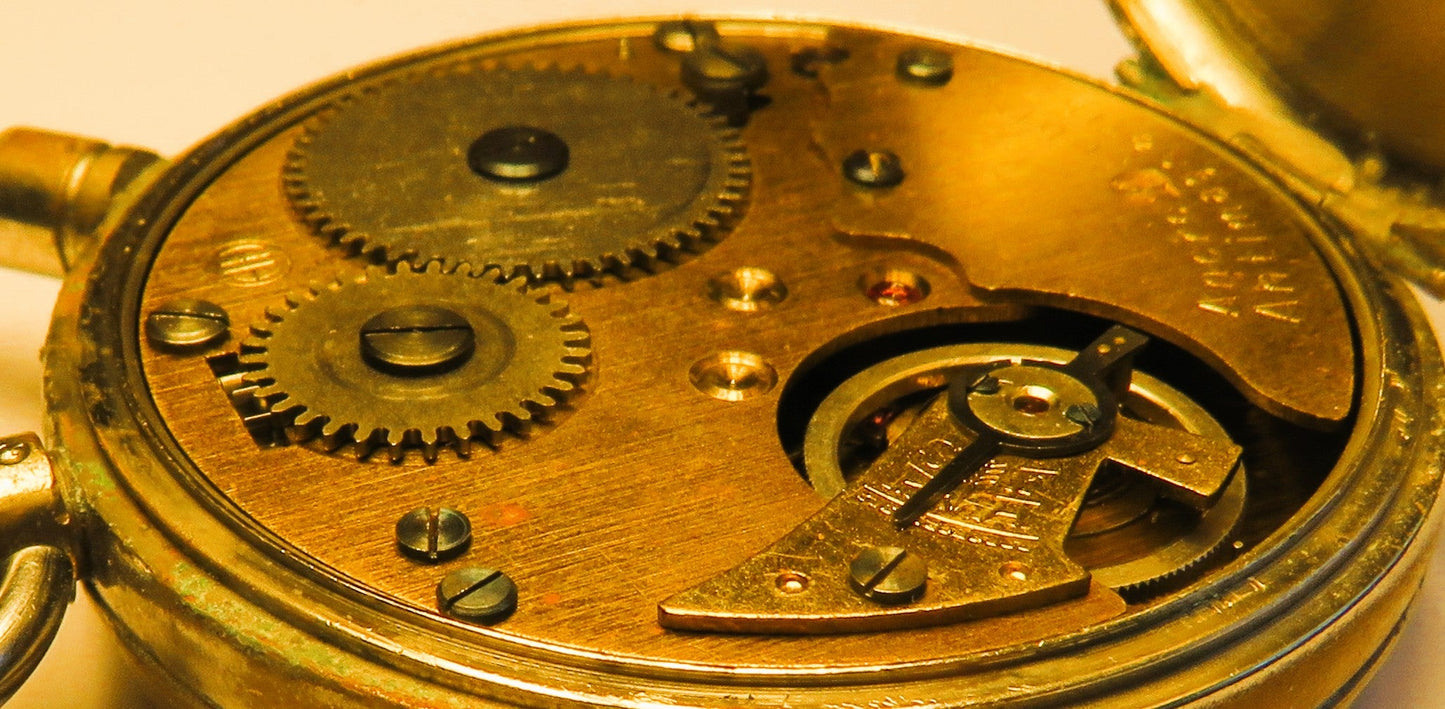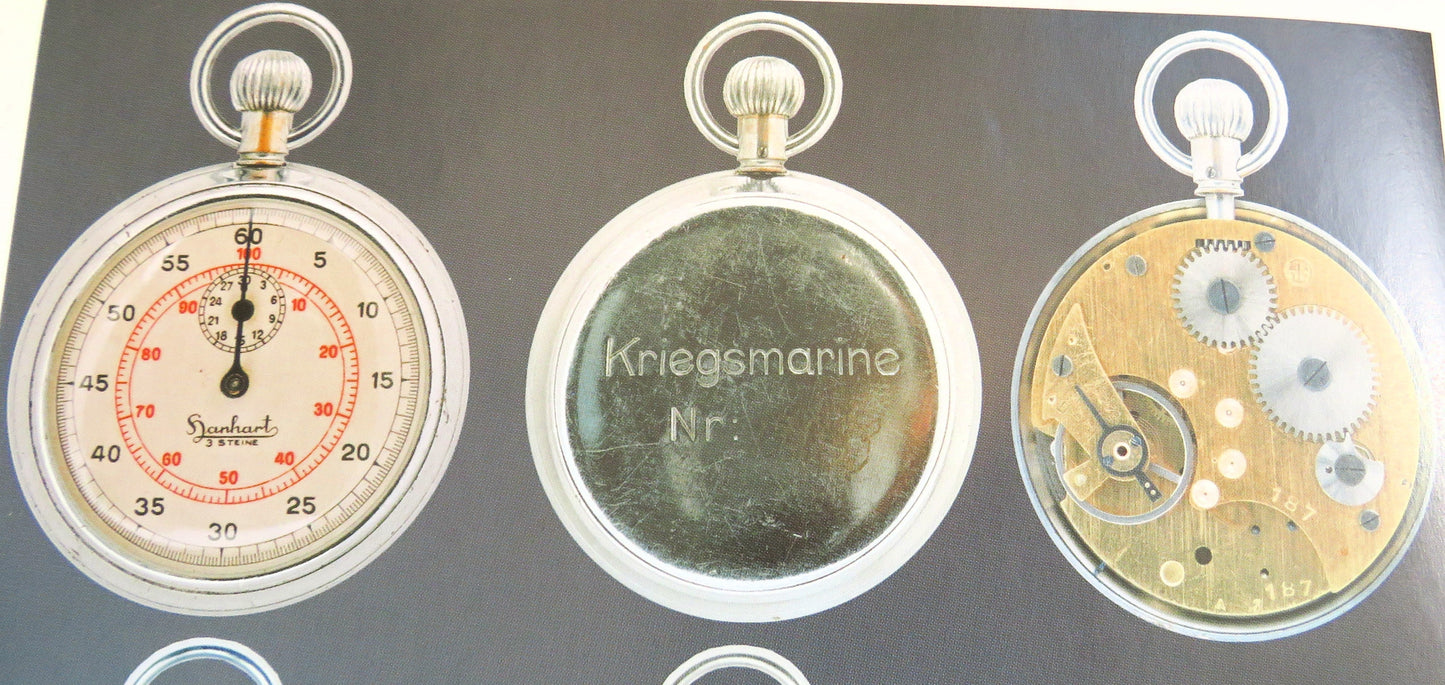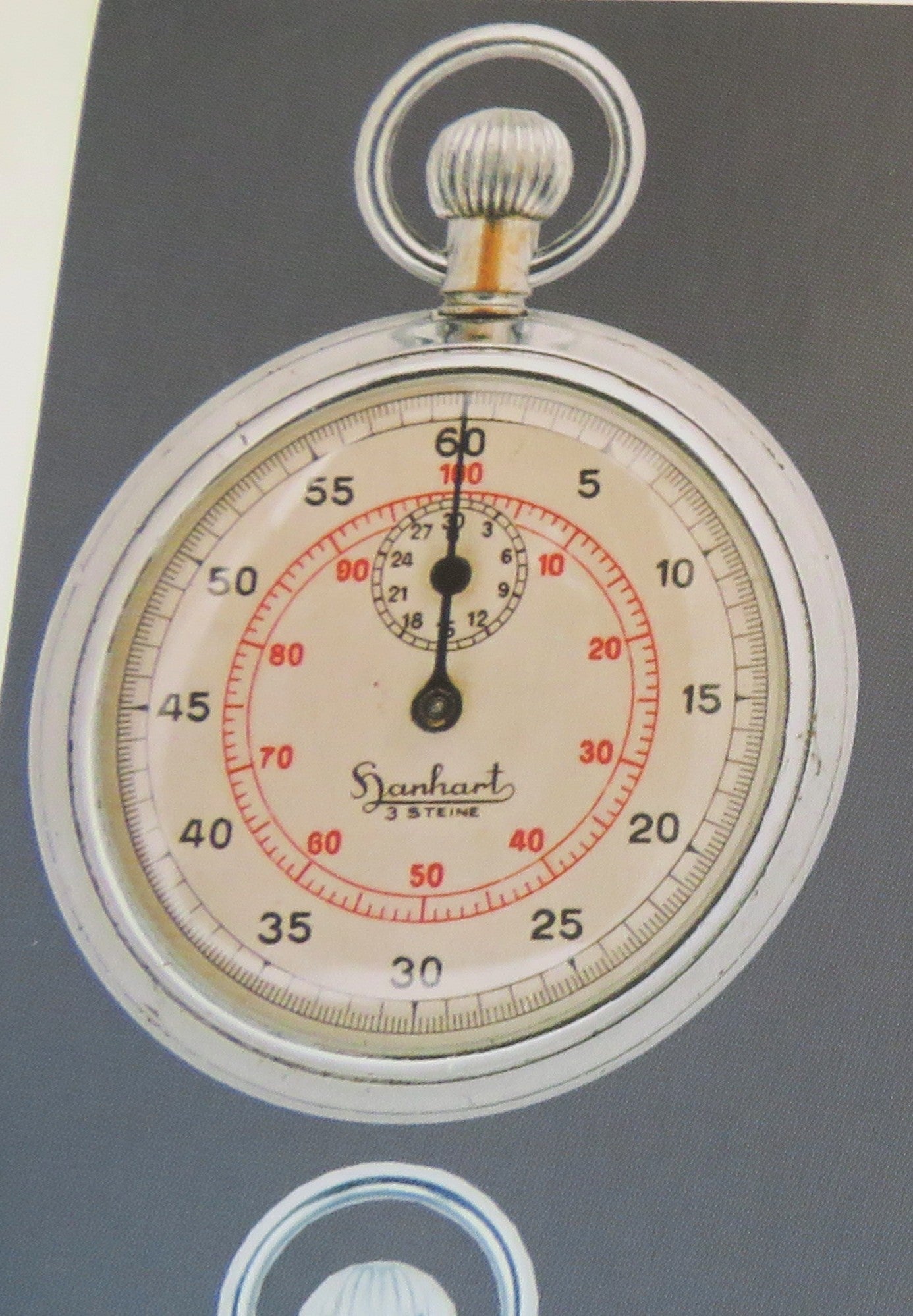Sammler-Uhren
Hanhart original stopwatch Marine Artillery WW2 from around 1935, rare dial
Hanhart original stopwatch Marine Artillery WW2 from around 1935, rare dial
Couldn't load pickup availability
Original Hanhart signed, rare example - dial - of a stopwatch of the naval artillery from the era of the Second World War
The German precision watch manufacturer Hanhart was and is known for its extremely high-quality chronographs and stopwatches, especially before and during World War II
Rare piece of watch history from the pre-war period around 1938, which rarely comes onto the market
Description:
The 100% original torpedo running time watch, stopwatch has the dimensions common for artillery and navy: 50mm case diameter, white, "Hanhart" signed, unrestored with internal red 60-second scale
Clean, unsigned movement with anti-magnetic soft iron movement protection cover, three-covered clock, both covers close absolutely flush and rock solid
The stopwatch is functional and runs continuously (accuracy not tested). The movement with 11 high-quality ruby bearings is clean. The case and crystal show normal, barely noticeable signs of age or wear. The unrestored dial is flawless.
EZ: 2: normal, visible signs of wear - especially significant abrasion on the case, dial unrestored in good condition
History of the military and precision watch manufacturer Hanhart (Source: Watch Wiki):
Hanhart specializes in the manufacture of stopwatches and high-quality chronographs. In 1882, the Swiss Johann Adolf Hanhart founded his watchmaking business in Diessenhofen , Canton Thurgau, and after 20 years, due to a shortage of watchmakers, relocated it across the border to the watchmaking stronghold of Schwenningen in the Black Forest. His youngest son , Wilhelm Julius Hanhart (* October 31, 1902 - † October 22, 1986), joined the company in 1920 at the age of 18. In 1924, Wilhelm Julius Hanhart launched the world's first affordable stopwatch, which was intended to compete with expensive Swiss watches. [1] The success of this watch formed the basis for the company's rise. From 1926 onwards, the product range was expanded to include wristwatches and pocket watches.
In 1932, Johann Adolf Hanhart died. The reorientation of the company in the same year, which centered on the abandonment of the retail business, proved successful for the company. At that time, Hanhart employed 30 people, but by 1939 there were already 200. [1] In 1934, the company , which still exists today, was founded in Gütenbach in the Black Forest as an extension. In 1938, Hanhart developed its first one-push chronograph, Caliber 40. A faithful replica of this is now very popular among watch enthusiasts under the name Pioneer Mk I. The one-push chronograph, introduced in 1939, was issued to the Navy and especially to the Air Force . Due to its reliability and accuracy, it was just as popular with pilots during the Second World War as the watches made by Tutima . In addition to these pilot's chronographs, production of the two-push model Caliber 41 began around 1940. Pilot's watches became the manufacturer's main product at the time, which also produced pocket chronographs for naval artillery. At that time, the company manufactured, among other things, eight different stopwatches. The so-called super-fast oscillator made it possible to measure 1/100 of a second with a mechanical stopwatch. However, watch production had to be curtailed by the end of the war in favor of the production of time fuses for torpedoes .
- Military product line until 1945
 Facsimile of the caliber 40 (today: Pioneer Mk I) with unusual trigger operation (red button top right)
Facsimile of the caliber 40 (today: Pioneer Mk I) with unusual trigger operation (red button top right)  A restored original Tachy Tele produced after 1945
A restored original Tachy Tele produced after 1945
After dismantling, production of pilot's watches began again in 1948. Willy Hanhart, who had gone to Switzerland during denazification in Germany, returned to the newly founded Baden-Württemberg . At the same time, a chronograph was being developed specifically for doctors and officers. Hanhart initially worked for the French Air Force, and from 1955, with slight modifications, also for the re-established German Air Force. The German Navy was also supplied with precision watches. At that time, Hanhart was the sole watch supplier to the young Bundeswehr . At the same time, the stopwatch division developed into the market leader in Europe in the 1950s, and precision watch sales were expanded to include other Western European air forces. Production of pilot's watches and chronographs for staff officers and doctors in the Bundeswehr continued until 1962. The end of the military production line was shortly followed by the end of Hanhart's wristwatch business. The further expansion of the stopwatch range continued with the partial loss of Bundeswehr orders in the 1960s. As early as 1962, Hanhart was the market leader for mechanical stopwatches.
- Mechanical stopwatches
From the 1970s onward, electronic timepieces began to replace mechanical movements. Another area of activity was therefore quartz watches and alarm clocks. When Japan flooded the market with cheap goods in the 1980s, quality Western-made products faded into the background. Despite these difficult conditions, Hanhart won theiF Design Award , a prize for good industrial design, in 1985. But business continued to decline. In 1992, the family business had to be sold.
Klaus Eble, Willy Hanhart's son-in-law, managed to steer the brand out of the crisis with consistent company policy and concentrate on its core business, the production of high-quality watches. [1] A reissue of the 1939 pilot's watch, still popular among experts and collectors, was launched in 1997. Hanhart also offers replicas of its single-push chronograph. These wristwatches, made according to the original models, feature a rotating bezel . The pushers are spaced at different distances from the crown , and to prevent accidental resetting, the pusher is red. Also in 1997, administration and production were merged in Gütenbach.
Today, Hanhart is one of the last watch manufacturers producing high-quality stopwatches. Around 150,000 electronic and 25,000 mechanical stopwatches leave the Gütenbach workshops annually. The watches are used in automobile rallies, sporting competitions, as well as in laboratory technology (research/ photo lab ), and for time recording ( REFA ). Hanhart also delivers its products calibrated with a certificate upon request. Sales are handled worldwide through authorized jewelers, industrial and sporting goods retailers, and the company's own internet portals.
In 2008, Hanhart AG began operations in Switzerland, based at its original location in Diessenhofen (Canton Thurgau). At the Baselworld 2009 watch and jewelry fair, a collection was presented that builds on traditional watchmaking craftsmanship and incorporates high-quality Swiss-German manufacturing techniques. The name of this chronograph collection is Primus , named after the successful model launched in 1938. The new watch collection retains the old identifying symbol, the red pusher. The collection of these high-quality chronographs encompasses the themes of air , earth , and water ( Pilot , Racer , Diver ) and is available in steel, with a black ADLC coating, and in 18k rose gold, depending on the model.
- Example from the Primus collection
The Pioneer collection brings together Hanhart's classics, based on the historic Hanhart pilot's chronographs of the 1930s. It includes the following models: Pioneer Mk I , Pioneer Mk II , and Pioneer TachyTele . At Baselworld 2011, Hanhart introduced the Pioneer MonoControl , Pioneer TwinControl , and, as the top model, the Pioneer TwinDicator .
In 2012, Hanhart celebrated its 130th anniversary and, at Baselworld , presented a special model limited to 2 × 130 pieces, the Pioneer Stealth 1882. In September 2012, Hanhart launched the Pioneer Racemaster collection, which incorporates classic racing car attributes as design elements.
In 2014, Hanhart AG was sold to an investor, indirectly acquiring the majority stake in A. Hanhart GmbH & Co. KG in Gütenbach. As part of this change of ownership, the chronograph business was fully transferred to the KG in Germany. Following the company's bankruptcy filing in 2014, the watch business continued under the newly founded Hanhart 1882 GmbH.
However, stopwatches and chronographs continued to be manufactured and produced at the Gütenbach site until the end of 2015 and were therefore only legally considered separate companies. At the beginning of 2016, the Stopwatches KG was acquired by Hanhart 1882 GmbH. Since then, both the chronograph and stopwatch divisions have operated under the unified Hanhart 1882 GmbH.
